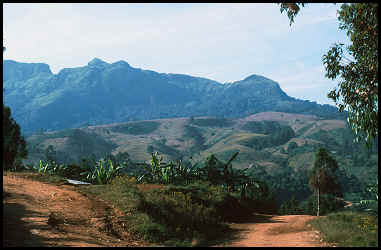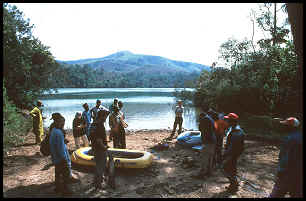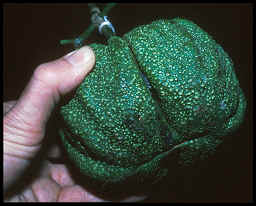Western Cameroon Projects: BALI-NGEMBA FOREST RESERVE
BALI-NGEMBA FOREST RESERVE

Bali-Ngemba Forest Reserve is the largest surviving fragment and only formally protected part of the original Bamenda Highlands lower montane forest. The reserve consists of both lower altitude (c. 1400-1700 m) and upper altitude forest (c. 1700-1900 m), but only some 10 square kilometres of the original forest still remains intact, the rest having been cleared and destroyed for farming.
One estimate (Cheek et al. 2000) is that as much as 96.5% of the original forest cover of the Bamenda Highlands has been lost.

Kew project
Kew is currently participating in a GEF-sponsored, Birdlife International managed project entitled "Community-based conservation in the Bamenda Highlands" run by the Bamenda Highlands Forest Project. This aims to support local government efforts and local people in conserving the remaining forest of the Bamenda Highlands Forest in various ways, including increasing and sustaining production from farmland outside the forest, and raising awareness of forest values.

New discoveries
The preservation of Bali-Ngemba is the best hope for the survival of the tree Ternstroemia polypetala, Cameroon's only native member of the Theaceae. Other Bali-Ngemba plants, considered by the IUCN to be under threat, include Eriocaulon asteroides, Begonia oxyanthera and Oncoba lophocarpa. Still more are likely to be proposed as a result of our surveys. Several potential new species to science have also been identified from this forest: Tabernaemontana cf. ventricosa; Oncoba sp. nov.; Beilschmiedia sp. nov; and Deinbollia sp. nov.
Tabernaemontana cf. ventricosa (Apocynaceae). A probable new species of tree at Bali-Ngemba.

